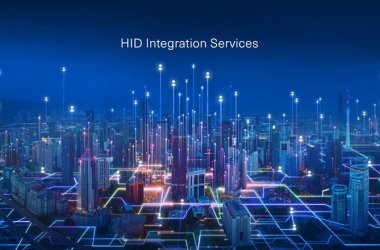COVID-19 has accelerated digital transformation efforts for organisations everywhere, driving rapid adoption of new cloud technologies to support remote working and online learning.

Extreme Networks has launched a #NewNormal initiative to help all of its customers adapt to the transition. The #NewNormal initiative is a comprehensive program that provides information and industry insights to help companies survive and thrive leveraging the industry’s only 4th generation cloud management platform.
ExtremeCloud IQ is a machine learning and AI- driven cloud management solution, built on a 4th generation cloud platform. Integrated with Extreme’s end-to-end enterprise networking technology, it assists in collecting data to build, secure, and maintain agile and distributed work environments. For organisations bringing employees back to work and students back to school, ExtremeCloud IQ helps ensure safe mobility on campus with IoT and robotics connectivity and visibility, as well as support for occupancy management and contact tracing applications.
Norman Rice, Chief Operating Officer, Extreme Networks, said, “As we grapple with more data, coming from more places, more connected devices, and more SaaS-based applications, the cloud is becoming fundamental to establishing a new normal. This means organisations need an even better cloud – one that delivers infinite 9s of uptime, dependable and uncorrupted data over an unlimited time span, and the industry’s best security. That comes with a 4th generation cloud and Extreme is the only company that has one with its ExtremeCloud IQ platform.”
ExtermeIQ use cases:
- Facilitating Agile Work Environments – For organisations needing to connect, secure, and manage remote network sites or remote workers, or enable distance learning, ExtremeCloud IQ can be deployed to manage Extreme’s curated Portable Branch Kits (PBK) and Bring Your Office Home Kits (BYOH). ExtremeCloud IQ offers analytics and tools to proactively monitor and optimise network health across every part of an organisation, whether it be a fixed or temporary location, or over a wired or wireless network. As people return to work and school, the flexible and portable ExtremeCloud IQ application allows IT administrators to adjust to changing user, device, and data requirements.
- Occupancy Management – For facilities, human resources, and legal teams tasked with reducing risk reduction via safe social distancing, ExtremeCloud IQ integrates with Extreme network solutions and third-party technologies to provide real-time and historical presence analytics, location monitoring, and building monitoring, as well as real-time location services and in-door positioning. The collected data allows third-party applications to alert on excessive levels of congregation, volume of traffic over time, no-go zones, violations of directional flows, or other parameters, including notifying staff when an area requires additional sterilisation after prolonged or excessive occupancy.
- IoT Monitoring and Robotics Automation – For organisations needing a high-level of visibility and environmental monitoring, Extreme offers secure wired and wireless connectivity and simple, secure device onboarding and management via ExtremeCloud IQ. The application provides complete visibility and management of connected devices that monitor health and safety, without requiring technical staff or staging services. It offers correlation of device location and gathered data, with unlimited data available in July. It also helps to manage remote operations for unmanned manufacturing facilities that are using robotics assistance to minimize staff exposure.
- Contact Tracing Enablement – The same network that is already providing corporate communication is also continually monitoring, gathering, and recording client activity. With ExtremeWireless access points, managed by ExtremeCloud IQ, organisations have complete visibility into their distributed network traffic, providing specific location information and unlimited historical data, starting in July. Administrators can easily track where users connected, where they roamed within the facility, and what other devices were connected in those areas at the same time, and then feed that data to third-party applications that support contact tracing.





